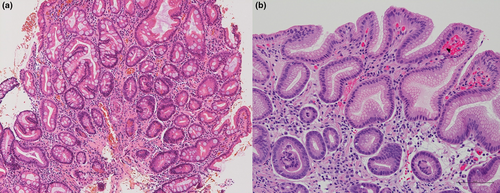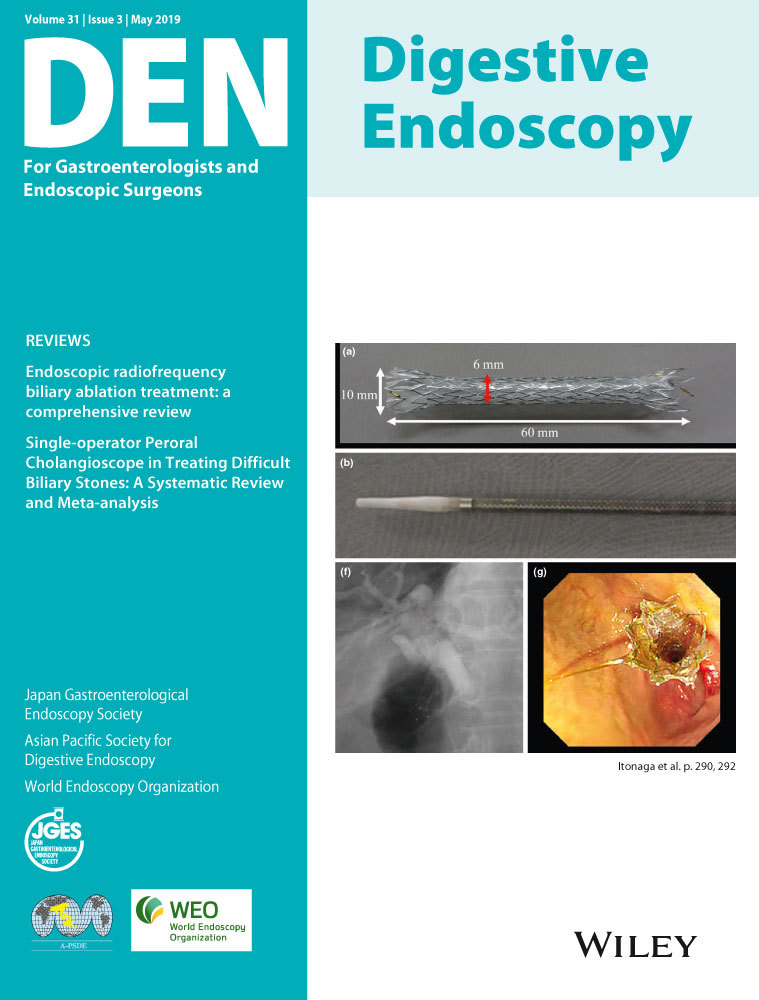Spraying l-menthol enhances gastric intestinal metaplasia in linked color imaging
Abstract
Watch a video of this article
Brief Explanation
Recently, there have been some reports that image-enhanced endoscopy (IEE) may be useful for detection of gastric intestinal metaplasia (GIM).1, 2 Linked color imaging (LCI) enables non-invasive detection of GIM as a lavender color, which is called lavender color sign (LCS).3 Spraying l-menthol directly onto the gastric antral mucosa is useful for anti-peristalsis. As a secondary effect of spraying l-menthol, Mori et al.4 reported annular-reticular-like mucosal changes that were mucosal morphological changes. Herein, we present a new phenomenon of l-menthol clearly enhancing GIM as LCS in LCI. Case 1 is a patient who was not infected with Helicobacter pylori. Mucosal color tone was not remarkably different before and after spraying l-menthol (Video S1, case 1). Next, we show the enhancement phenomenon of GIM by l-menthol (Video S1 case 2, Fig. 1). In case 2, the patient was positive for H. pylori and had severe atrophy in the antrum, but GIM was not recognized in white light imaging (WLI) (Fig. 1a). GIM was detected by LCI as a slightly whitish lavender color in the lesser curvature (arrows) (Fig. 1b). Approximately 60 s after spraying l-menthol, the vascular pattern had disappeared and the gastric mucosa showed slight redness with WLI. GIM was observed as a slight whitish flat elevation (Fig. 1c). With LCI, this phenomenon was dramatically enhanced and LCS became clear (Fig. 1d). The enhancement was reversible and returned to the state before spraying within 5 min (Fig. 1e,f ). Target biopsy from LCS showed GIM (Fig. 2a) and GIM was not shown in a biopsy from the nearby mucosa without LCS (Fig. 2b). We speculate that this reversible phenomenon is associated with mucosal edema caused by absorption of lipids by GIM after spraying l-menthol. Further study to prove the usefulness of spraying l-menthol for IEE is needed.


Conflicts of Interest
N.S. received travel grants and honoraria from Bristol-Myers-Squibb, Abbvie, Gilead Science and MSD, and received research grants from Bristol-Myers-Squibb, Abbvie, Gilead Science and Otsuka Pharmaceutical. S.O. and Y.O. have no conflicts of interest to disclose.




